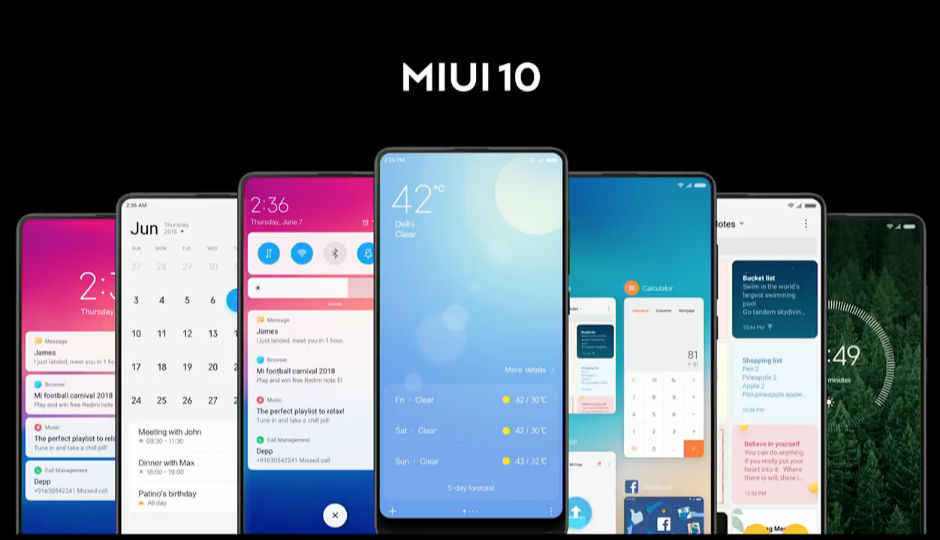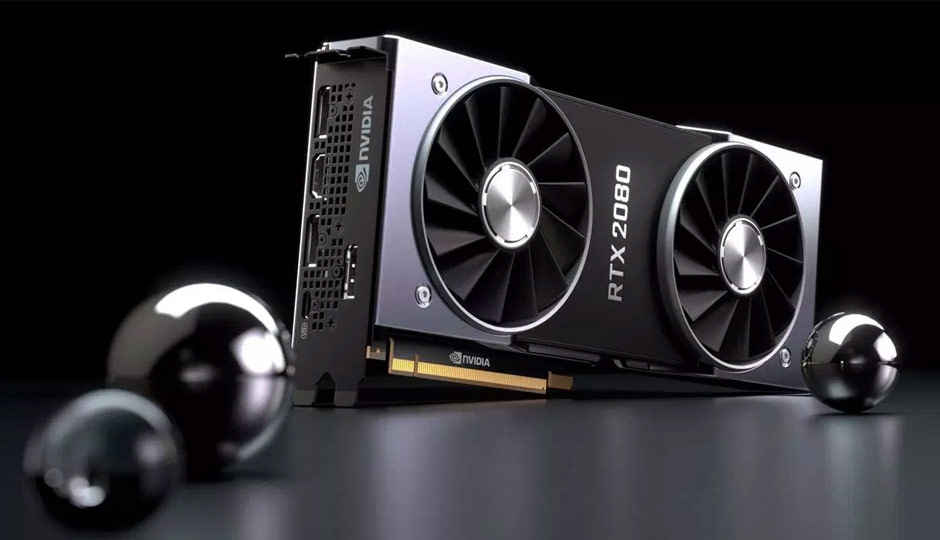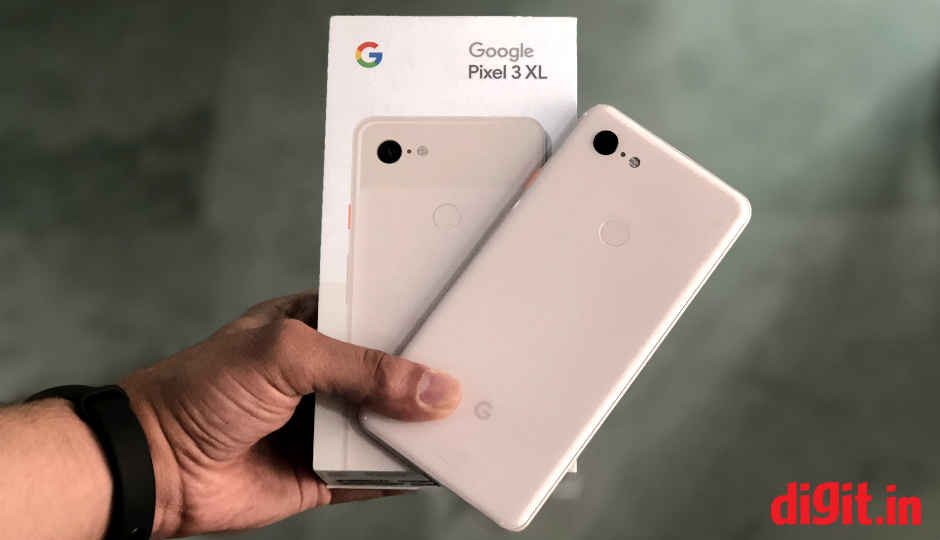 Highlights: Samsung Galaxy S10+ with Exynos 9820 spotted on Geekbench It scores similar to what the S10+ with Snapdragon 855 scored on Geekbench Last month, the Samsung Galaxy S10+ powered by the Qualcomm Snapdragon 855 was spotted on Geekbench. It scored 3413 points in single-core tests and 10256 points on multi-core tests. Now, the phone has again been spotted on the benchmarking platform running on the company's own Exynos 9820 mobile platform. According to the latest listing, the scores are more-or-less same as we have seen in the previous one. The phone with Exynos processor is seen scoring 4472 points in single-core tests and 10387 points on multi-core tests. The scores also suggest that the Samsung is catching up with Apple’s A12 Bionic chipset that currently powers its latest series of iPhones: the iPhones XS, the iPhones XS Max, and the iPhones XR. Samsung will unveil the phones at an ‘Unpacked’ event in San Francisco on February 20. The three US variants of the phone have already got a certification from the Federal Communications Commission (FCC). Reports have suggested that Samsung will also be launching a 5G variant of the phone in select markets, including the US. There hasn’t been any concrete proof of the device, and since it is reported to launch at a later date this year, it is possible that Samsung will get the approval for the 5G variant in the coming months. According to the documents published, the FCC has approved phones with model numbers SM-G970U, SM-G973U and SM-G975U. These model numbers correspond to the Galaxy S10e or S10 Lite, the Galaxy S10 and the Galaxy S10+ respectively. Samsung generally launches its flagship devices with different chipsets in the US. While in Asian countries it uses an indigenously developed Exynos processor, in the US Samsung’s flagships are powered by Qualcomm SoCs. The FCC listing also mentioned that all or some variants of the phones may also support the reverse wireless charging feature that can wirelessly charge other compatible devices like handsets and watches that have wireless charging support. The filing has a document titled “Wireless Power Transfer”, which mentions that the Galaxy S10 can “receive or transmit an AC power signal through magnetic induction (MI) or magnetic resonance (MR).” Related Read: Samsung Galaxy 'S10E' press renders allegedly leaked Samsung Galaxy S10 and Galaxy S10+ press renders leak in full
Highlights: Samsung Galaxy S10+ with Exynos 9820 spotted on Geekbench It scores similar to what the S10+ with Snapdragon 855 scored on Geekbench Last month, the Samsung Galaxy S10+ powered by the Qualcomm Snapdragon 855 was spotted on Geekbench. It scored 3413 points in single-core tests and 10256 points on multi-core tests. Now, the phone has again been spotted on the benchmarking platform running on the company's own Exynos 9820 mobile platform. According to the latest listing, the scores are more-or-less same as we have seen in the previous one. The phone with Exynos processor is seen scoring 4472 points in single-core tests and 10387 points on multi-core tests. The scores also suggest that the Samsung is catching up with Apple’s A12 Bionic chipset that currently powers its latest series of iPhones: the iPhones XS, the iPhones XS Max, and the iPhones XR. Samsung will unveil the phones at an ‘Unpacked’ event in San Francisco on February 20. The three US variants of the phone have already got a certification from the Federal Communications Commission (FCC). Reports have suggested that Samsung will also be launching a 5G variant of the phone in select markets, including the US. There hasn’t been any concrete proof of the device, and since it is reported to launch at a later date this year, it is possible that Samsung will get the approval for the 5G variant in the coming months. According to the documents published, the FCC has approved phones with model numbers SM-G970U, SM-G973U and SM-G975U. These model numbers correspond to the Galaxy S10e or S10 Lite, the Galaxy S10 and the Galaxy S10+ respectively. Samsung generally launches its flagship devices with different chipsets in the US. While in Asian countries it uses an indigenously developed Exynos processor, in the US Samsung’s flagships are powered by Qualcomm SoCs. The FCC listing also mentioned that all or some variants of the phones may also support the reverse wireless charging feature that can wirelessly charge other compatible devices like handsets and watches that have wireless charging support. The filing has a document titled “Wireless Power Transfer”, which mentions that the Galaxy S10 can “receive or transmit an AC power signal through magnetic induction (MI) or magnetic resonance (MR).” Related Read: Samsung Galaxy 'S10E' press renders allegedly leaked Samsung Galaxy S10 and Galaxy S10+ press renders leak in fullfrom Latest Technology News http://bit.ly/2Gpr8VS
 Highlights: The popular belief so far was that the Moon was born out of materials from a Mars-sized impactor when it collided with Earth nearly 4.5 billion years ago. New research at NASA suggests it's Earth's materials found on the Moon and not the impactor's. More research is necessary to confirm all of this, NASA believes. For decades now, scientists have wondered how the Moon came to be and what it consists of. The most popular theory says that the Moon consists of materials from a Mars-sized celestial body from the time it collided with Earth approximately 4.5 billion years ago. However, new research data from NASA suggests otherwise. It suggests that our Moon consists of materials found on Earth and not from the Mars-sized impactor. The new research comes from analyses made recently and samples collected from the Moon nearly fifty years ago during the Apollo missions. The findings of the recent research have been published in the journal Science Advances by Kevin Righter of the Astromaterials Research and Exploration Science Division (ARES) at NASA’s Johnson Space Center in Houston, Texas. He questions the popular, long-standing theory that the Moon contains elements from the Mars-sized impacting body and believes that they’re actually from Earth. He says this after modelling the composition of the Moon while considering several deciding factors like post-impact disk processes and the formation of the Moon’s small metallic core. Righter created a “bulk Moon” model composition similar to that of our planet to compare the concentrations of 14 volatile siderophile (metal-loving) elements from the Moon samples with his calculated values. To everyone’s surprise, he found a strong correlation with 9 out of the 14 elements, suggesting that the Moon does not contain elements from the Mars-sized impactor. “By simulating the main processes contributing to the Moon’s formation and early differentiation, we were able to predict the level of each element that should be present in the Moon’s mantle,” commented Righter in a recent NASA press release. Righter firmly believes that more research is required to understand the dynamic environment of the post-impact disk better and hopes that his own research brings about a deeper dive into the matter. “Scientists in the 1970s recognized the very low levels of some of these volatile elements in lunar samples,” the scientist added. “Much lower than concentrations in the Earth. But lack of experimental data in the 1970s hindered scientists from a complete understanding of these low lunar concentrations.” Related Read: China's lunar probe lands on the dark side of the moon
Highlights: The popular belief so far was that the Moon was born out of materials from a Mars-sized impactor when it collided with Earth nearly 4.5 billion years ago. New research at NASA suggests it's Earth's materials found on the Moon and not the impactor's. More research is necessary to confirm all of this, NASA believes. For decades now, scientists have wondered how the Moon came to be and what it consists of. The most popular theory says that the Moon consists of materials from a Mars-sized celestial body from the time it collided with Earth approximately 4.5 billion years ago. However, new research data from NASA suggests otherwise. It suggests that our Moon consists of materials found on Earth and not from the Mars-sized impactor. The new research comes from analyses made recently and samples collected from the Moon nearly fifty years ago during the Apollo missions. The findings of the recent research have been published in the journal Science Advances by Kevin Righter of the Astromaterials Research and Exploration Science Division (ARES) at NASA’s Johnson Space Center in Houston, Texas. He questions the popular, long-standing theory that the Moon contains elements from the Mars-sized impacting body and believes that they’re actually from Earth. He says this after modelling the composition of the Moon while considering several deciding factors like post-impact disk processes and the formation of the Moon’s small metallic core. Righter created a “bulk Moon” model composition similar to that of our planet to compare the concentrations of 14 volatile siderophile (metal-loving) elements from the Moon samples with his calculated values. To everyone’s surprise, he found a strong correlation with 9 out of the 14 elements, suggesting that the Moon does not contain elements from the Mars-sized impactor. “By simulating the main processes contributing to the Moon’s formation and early differentiation, we were able to predict the level of each element that should be present in the Moon’s mantle,” commented Righter in a recent NASA press release. Righter firmly believes that more research is required to understand the dynamic environment of the post-impact disk better and hopes that his own research brings about a deeper dive into the matter. “Scientists in the 1970s recognized the very low levels of some of these volatile elements in lunar samples,” the scientist added. “Much lower than concentrations in the Earth. But lack of experimental data in the 1970s hindered scientists from a complete understanding of these low lunar concentrations.” Related Read: China's lunar probe lands on the dark side of the moon Highlights: Xiaomi devices with MIUI 10.2.1 get Google Assistant shortcut. MIUI 10 brings navigation gesture for Xiaomi devices but this removes the standard method of invoking Google Assistant. A short press on the power button enables the Google Assistant. Xiaomi announced its MIUI 10 back when it launched the Mi 8 series of smartphones in China. The UI skin that sits on top of the Android operating system comes with full-screen gesture support. However, when one uses gestures on MIUI 10, the software navigation buttons are removed and one cannot boot up the Google Assistant in the standard way of pressing down on the home button. However, XDA Developers spotted that a new option has been added with the MIUI 10.2.1 update that enables one to use the power button to call up the smart assistant. This changes on the MIUI 10.2.1 enables bringing up the Google Assistant while using navigation gestures. One can now press and hold the power button for 0.5 seconds to invoke the company’s smart assistant, but the feature is disabled by default and one will need to enable it from the “Button and gesture shortcuts” setting menu on their phone. However, there is no option to set the delay timer. This new option is similar to the feature enabled by OnePlus with the Open Beta 3 on the OnePlus 6. As per the company’s product manager, Sudeep Sahu, the company’s focus with MIUI 10 has been on Speed, Design, Sound and AI Portrait image capturing. In terms of performance, MIUI 10 comes with two new features called “lock free critical path” and “co-dependent prioritising”, which are said to improve speed times of their devices by up to 10 percent. The recent screen is also revamped with MIUI 10 as one will now get to scroll down for viewing stacked cards of their recently used apps. One can also swipe to remove apps or long press on an app for accessing shortcuts like the split view. In terms of audio, the notification tone is said to change with every message you receive. There have also been some new changes in MIUI 10 specifically for Indian users. The web browser has a dedicated page for local services with support for Progressive Web Apps (PWA). The camera app also recognises Paytm QR codes and there’s a quick menu tab for all business messages in the Messages app. Related Reads: Xiaomi Redmi 6 Pro, Redmi 6 and Redmi 6A receive temporary price cut till February 8 Xiaomi announces MIIUI 10 roll out for 28 devices
Highlights: Xiaomi devices with MIUI 10.2.1 get Google Assistant shortcut. MIUI 10 brings navigation gesture for Xiaomi devices but this removes the standard method of invoking Google Assistant. A short press on the power button enables the Google Assistant. Xiaomi announced its MIUI 10 back when it launched the Mi 8 series of smartphones in China. The UI skin that sits on top of the Android operating system comes with full-screen gesture support. However, when one uses gestures on MIUI 10, the software navigation buttons are removed and one cannot boot up the Google Assistant in the standard way of pressing down on the home button. However, XDA Developers spotted that a new option has been added with the MIUI 10.2.1 update that enables one to use the power button to call up the smart assistant. This changes on the MIUI 10.2.1 enables bringing up the Google Assistant while using navigation gestures. One can now press and hold the power button for 0.5 seconds to invoke the company’s smart assistant, but the feature is disabled by default and one will need to enable it from the “Button and gesture shortcuts” setting menu on their phone. However, there is no option to set the delay timer. This new option is similar to the feature enabled by OnePlus with the Open Beta 3 on the OnePlus 6. As per the company’s product manager, Sudeep Sahu, the company’s focus with MIUI 10 has been on Speed, Design, Sound and AI Portrait image capturing. In terms of performance, MIUI 10 comes with two new features called “lock free critical path” and “co-dependent prioritising”, which are said to improve speed times of their devices by up to 10 percent. The recent screen is also revamped with MIUI 10 as one will now get to scroll down for viewing stacked cards of their recently used apps. One can also swipe to remove apps or long press on an app for accessing shortcuts like the split view. In terms of audio, the notification tone is said to change with every message you receive. There have also been some new changes in MIUI 10 specifically for Indian users. The web browser has a dedicated page for local services with support for Progressive Web Apps (PWA). The camera app also recognises Paytm QR codes and there’s a quick menu tab for all business messages in the Messages app. Related Reads: Xiaomi Redmi 6 Pro, Redmi 6 and Redmi 6A receive temporary price cut till February 8 Xiaomi announces MIIUI 10 roll out for 28 devices  Highlights: Xiaomi Redmi 6 series of smartphones get temporary price cut. The discounted pricing to be available from Feb 6 to Feb 8. Xiaomi has announced a limited time price cut on its Redmi 6 series of smartphones. The Redmi 6 Pro, Redmi 6A and the Redmi 6 will be available at a lowered price from February 6 to February 8 on Mi.com, Amazon.in and Flipkart. Additionally, those who purchase the phones via Flipkart will also get to avail an additional Rs 1,000 off on exchange. The 3GB RAM + 32GB storage variant of the Redmi 6 Pro will be available at Rs 8,999, down from its launch price of Rs 11,499. The 4GB + 64GB version of the phone also gets a discount and will be available for Rs 10,999, instead of its MRP of Rs 13,499. The Redmi 6A and the Redmi 6 will also be available at lowered prices during the aforementioned days. The Redmi 6A with 2GB RAM + 32GB storage will be up for sale at Rs 6,499, while the 3GB RAM + 64GB storage version of the Redmi 6 will be up for grabs at a discounted price of Rs 8,499. The two phones were announced priced at Rs 7,999 and Rs 10,499 respectively. The company announced the news via the Redmi India Twitter handle and also took a dig at the Samsung’s new M series of smartphones that have gone up for sale today. The company’s tweet reads, “Time for some Real deals! As a 'M'illennial be smart and choose wisely!” Time for some Real deals! As a 'M'illennial be smart and choose wisely! pic.twitter.com/jWc3bnTxrz — Redmi India (@RedmiIndia) February 5, 2019 The Redmi 6 Pro was launched last year in September. The smartphone features an aluminum build and comes equipped with a rear-mounted fingerprint sensor. It is powered by the Qualcomm Snapdragon 625 SoC and comes equipped with a 5.84-inch Full HD+ ‘notch’ screen with a 19:9 display aspect ratio. In terms of optics, the handset features a dual rear camera setup that supports EIS. There's a 12MP Sony IMX 486 primary sensor and a 5MP secondary Samsung sensor on the rear. The handset is powered by a 4000mAh battery and runs on MIUI 9.6 based on Android Oreo. Talking about the specs, the Xiaomi Redmi 6 sports a 5.45-inch HD+ 18:9 display with a resolution of 720 x 1440 pixels. Under the hood, it is powered by the MediaTek Helio P22 SoC and comes with 3GB RAM and two storage options, one with 32GB and 64GB of storage. The internal storage can also be expanded up to 256GB via a microSD card. The handset runs on Android 8.1 Oreo with Xiaomi’s own MIUI 9.6 on top. Coming to the camera, the Redmi 6 sports a dual-rear camera setup with a 12MP + 5MP sensor configuration. On the front, it features a 5MP selfie camera. It is backed by a 3000mAh battery. To recall, the Redmi 6A is powered by the MediaTek Helio A22 SoC. It comes in the two variants mentioned above, both with 2GB RAM and options to select between 16GB and 32GB of inbuilt storage. The device sports a 5.45-inch HD+ screen with an 18:9 display aspect ratio and has a resolution of 1440x720 pixels. It runs on MIUI 9.6 atop Android 8.1 Oreo out-of-the-box and is backed by a 3000mAh battery. In terms of optics, the Redmi 6A comes equipped with a single 13MP rear camera sensor with f/2.2 aperture and PDAF support. On the front is a 5MP sensor for selfies. Xiaomi previously slashed the prices of five of its handsets. It previously lowered the pricing of the Redmi 6, Redmi 6 Pro, Redmi Note 5 Pro, Mi A2 and the Redmi Y2 smartphones. Related Reads: Xiaomi Redmi 6 is the company’s fifth smartphone to be permanently discounted
Highlights: Xiaomi Redmi 6 series of smartphones get temporary price cut. The discounted pricing to be available from Feb 6 to Feb 8. Xiaomi has announced a limited time price cut on its Redmi 6 series of smartphones. The Redmi 6 Pro, Redmi 6A and the Redmi 6 will be available at a lowered price from February 6 to February 8 on Mi.com, Amazon.in and Flipkart. Additionally, those who purchase the phones via Flipkart will also get to avail an additional Rs 1,000 off on exchange. The 3GB RAM + 32GB storage variant of the Redmi 6 Pro will be available at Rs 8,999, down from its launch price of Rs 11,499. The 4GB + 64GB version of the phone also gets a discount and will be available for Rs 10,999, instead of its MRP of Rs 13,499. The Redmi 6A and the Redmi 6 will also be available at lowered prices during the aforementioned days. The Redmi 6A with 2GB RAM + 32GB storage will be up for sale at Rs 6,499, while the 3GB RAM + 64GB storage version of the Redmi 6 will be up for grabs at a discounted price of Rs 8,499. The two phones were announced priced at Rs 7,999 and Rs 10,499 respectively. The company announced the news via the Redmi India Twitter handle and also took a dig at the Samsung’s new M series of smartphones that have gone up for sale today. The company’s tweet reads, “Time for some Real deals! As a 'M'illennial be smart and choose wisely!” Time for some Real deals! As a 'M'illennial be smart and choose wisely! pic.twitter.com/jWc3bnTxrz — Redmi India (@RedmiIndia) February 5, 2019 The Redmi 6 Pro was launched last year in September. The smartphone features an aluminum build and comes equipped with a rear-mounted fingerprint sensor. It is powered by the Qualcomm Snapdragon 625 SoC and comes equipped with a 5.84-inch Full HD+ ‘notch’ screen with a 19:9 display aspect ratio. In terms of optics, the handset features a dual rear camera setup that supports EIS. There's a 12MP Sony IMX 486 primary sensor and a 5MP secondary Samsung sensor on the rear. The handset is powered by a 4000mAh battery and runs on MIUI 9.6 based on Android Oreo. Talking about the specs, the Xiaomi Redmi 6 sports a 5.45-inch HD+ 18:9 display with a resolution of 720 x 1440 pixels. Under the hood, it is powered by the MediaTek Helio P22 SoC and comes with 3GB RAM and two storage options, one with 32GB and 64GB of storage. The internal storage can also be expanded up to 256GB via a microSD card. The handset runs on Android 8.1 Oreo with Xiaomi’s own MIUI 9.6 on top. Coming to the camera, the Redmi 6 sports a dual-rear camera setup with a 12MP + 5MP sensor configuration. On the front, it features a 5MP selfie camera. It is backed by a 3000mAh battery. To recall, the Redmi 6A is powered by the MediaTek Helio A22 SoC. It comes in the two variants mentioned above, both with 2GB RAM and options to select between 16GB and 32GB of inbuilt storage. The device sports a 5.45-inch HD+ screen with an 18:9 display aspect ratio and has a resolution of 1440x720 pixels. It runs on MIUI 9.6 atop Android 8.1 Oreo out-of-the-box and is backed by a 3000mAh battery. In terms of optics, the Redmi 6A comes equipped with a single 13MP rear camera sensor with f/2.2 aperture and PDAF support. On the front is a 5MP sensor for selfies. Xiaomi previously slashed the prices of five of its handsets. It previously lowered the pricing of the Redmi 6, Redmi 6 Pro, Redmi Note 5 Pro, Mi A2 and the Redmi Y2 smartphones. Related Reads: Xiaomi Redmi 6 is the company’s fifth smartphone to be permanently discounted Highlights 3DMark Port Royal benchmark updated to test DLSS performance. DLSS is said to offer up to 50 performance increase in frame rates. Few games support the feature as of now. Nvidia’s RTX series of GPUs bring some new tricks to the gaming scene, with Ray-Tracing being the one most talked about. However, the downside of having RTX enabled is the hit to the frame rates. In order to offset this reduction in performance, Nvidia had also announced a second new feature called DLSS or Deep Learning Super Sampling, which utilises the Tensor cores onboard the RTX cards and employs AI to predict the next set of frames. The goal is to increase the overall frame rate, with Nvidia claiming that with DLSS enabled games, users can expect up to twice the performance improvement in terms of frame rates. Popular PC benchmarking suite 3DMark has now updated its Port Royal benchmark to measure DLSS performance today, with Nvidia releasing new drivers that brings improved compatibility to the system. Since we have an Nvidia RTX 2080Ti in-house, we ran the benchmark on our test-rig to see just how much of a performance difference one could expect. The system specs are as follows: CPU - Intel Core i9-9900K GPU - NVIDIA GeForce RTX 2080 Ti RAM – 32GB Corsair Vengeance Pro (8x4) Motherboard - Asus ROG MAXIMUS XI HERO Storage – 1TB WD Black NVMe Monitor – Asus ROG Swift PG27VQ (1440p, 144Hz with Gsync) The Port Royal benchmark for testing DLSS performance is a 2-run process. First, the benchmark runs without DLSS enabled and then once with DLSS on. In the first run, Port Royal reported a frame-rate of 36.71fps while with DLSS on, the benchmark recorded the frame rate at 52.06fps. This was for the benchmark running at 2560x1440. On the Nvidia RTX 2080Ti, that is a roughly 41 percent improvement in frame rates. This is in line with the numbers reported on Nvidia’s blog post. Where the 2080Ti shows an improvement of about 40 percent (the lowest improvement amount) while the Nvidia RTX 2060 is expected to have a performance improvement of up to 50 percent. DLSS isn’t just about improved frame-rates, but also about crisper graphics in general. While this should be considered anecdotal, we watched the two Port Royal runs be executed, and the visuals on the second run (with DLSS enabled) were visibly crisper, especially when it comes to the peripheral aspects such as the edges of buildings that are not in the center of the frame or graphical assets that are completely towards the edges. 3DMark's Port Royal reports impressive performance boost with DLSS enabled Currently, there aren’t a lot of games in the market that support DLSS. The update has to be pushed out by game developers and it is their choice whether to support the feature or not. As of now, Battlefield V that supports Ray Tracing does not support DLSS. Final Fantasy XV supports the feature, with Nvidia having announced 9 new developers who would bring the feature to their games. This includes Hellblade: Senua’s Sacrifice by Ninja Theory and even Darksiders III by THQ Nordic. Games like ARK Survival, Shadow of the Tomb Raider and even PlayerUnknown’s Battlegrounds (PUBG) support DLSS. Games that will support DLSS (Image courtesy: Nvidia) As time passes, we can only hope that more game developers will support DLSS, given that the feature is able to squeeze up to 50 percent more performance on 1440p resolution. Related Read: Nvidia RTX 2060 Review
Highlights 3DMark Port Royal benchmark updated to test DLSS performance. DLSS is said to offer up to 50 performance increase in frame rates. Few games support the feature as of now. Nvidia’s RTX series of GPUs bring some new tricks to the gaming scene, with Ray-Tracing being the one most talked about. However, the downside of having RTX enabled is the hit to the frame rates. In order to offset this reduction in performance, Nvidia had also announced a second new feature called DLSS or Deep Learning Super Sampling, which utilises the Tensor cores onboard the RTX cards and employs AI to predict the next set of frames. The goal is to increase the overall frame rate, with Nvidia claiming that with DLSS enabled games, users can expect up to twice the performance improvement in terms of frame rates. Popular PC benchmarking suite 3DMark has now updated its Port Royal benchmark to measure DLSS performance today, with Nvidia releasing new drivers that brings improved compatibility to the system. Since we have an Nvidia RTX 2080Ti in-house, we ran the benchmark on our test-rig to see just how much of a performance difference one could expect. The system specs are as follows: CPU - Intel Core i9-9900K GPU - NVIDIA GeForce RTX 2080 Ti RAM – 32GB Corsair Vengeance Pro (8x4) Motherboard - Asus ROG MAXIMUS XI HERO Storage – 1TB WD Black NVMe Monitor – Asus ROG Swift PG27VQ (1440p, 144Hz with Gsync) The Port Royal benchmark for testing DLSS performance is a 2-run process. First, the benchmark runs without DLSS enabled and then once with DLSS on. In the first run, Port Royal reported a frame-rate of 36.71fps while with DLSS on, the benchmark recorded the frame rate at 52.06fps. This was for the benchmark running at 2560x1440. On the Nvidia RTX 2080Ti, that is a roughly 41 percent improvement in frame rates. This is in line with the numbers reported on Nvidia’s blog post. Where the 2080Ti shows an improvement of about 40 percent (the lowest improvement amount) while the Nvidia RTX 2060 is expected to have a performance improvement of up to 50 percent. DLSS isn’t just about improved frame-rates, but also about crisper graphics in general. While this should be considered anecdotal, we watched the two Port Royal runs be executed, and the visuals on the second run (with DLSS enabled) were visibly crisper, especially when it comes to the peripheral aspects such as the edges of buildings that are not in the center of the frame or graphical assets that are completely towards the edges. 3DMark's Port Royal reports impressive performance boost with DLSS enabled Currently, there aren’t a lot of games in the market that support DLSS. The update has to be pushed out by game developers and it is their choice whether to support the feature or not. As of now, Battlefield V that supports Ray Tracing does not support DLSS. Final Fantasy XV supports the feature, with Nvidia having announced 9 new developers who would bring the feature to their games. This includes Hellblade: Senua’s Sacrifice by Ninja Theory and even Darksiders III by THQ Nordic. Games like ARK Survival, Shadow of the Tomb Raider and even PlayerUnknown’s Battlegrounds (PUBG) support DLSS. Games that will support DLSS (Image courtesy: Nvidia) As time passes, we can only hope that more game developers will support DLSS, given that the feature is able to squeeze up to 50 percent more performance on 1440p resolution. Related Read: Nvidia RTX 2060 Review Highlights: Google starts rolling out February 2019 security patches Essential Phone is also getting Android P and latest security updates Just like it does every month, Google has started rolling out the Android security patch for the month of February. Since the support for the Nexus 5X and Nexus 6P was dropped last month, only the Pixel smartphones will be getting the latest security update. According to Pixel Update Bulletin February 2019, there are no Pixel security patches this month for any of the Pixel 3, Pixel 2, the first Pixel and Pixel C devices. The update is 111.6MB in size and, according to the changelog, the update fixes critical bugs and improves the performance and stability of the Pixel devices. There were 15 issues that were resolved in the February Android security patch, and there were no reports of customers being affected. Google says that it will revise the Android Security Bulletin with the AOSP links when they are available. “The most severe of these issues is a critical security vulnerability in Framework that could allow a remote attacker using a specially crafted PNG file to execute arbitrary code within the context of a privileged process. The severity assessment is based on the effect that exploiting the vulnerability would possibly have on an affected device, assuming the platform and service mitigations are turned off for development purposes or if successfully bypassed,” Google said in the bulletin. Meanwhile, Essential Products has announced that the Essential Phone is getting the Android 9 Pie update along with the latest February Security Patch. The company announced the development on Twitter. The software update will upgrade the device to Android 9.0.0, and it will bring a string of new OS features to the device. According to the changelog, the update brings Google Security Patch 2019-02, improved performance and some bug fixes, and modem security patches. Related Read: Booze-delivery scams found running through Google Maps in India We're rolling out February's security patch now. Keep an eye out for the update on your Essential Phone. pic.twitter.com/ljXyFOScpQ — Essential (@essential) 4 February 2019
Highlights: Google starts rolling out February 2019 security patches Essential Phone is also getting Android P and latest security updates Just like it does every month, Google has started rolling out the Android security patch for the month of February. Since the support for the Nexus 5X and Nexus 6P was dropped last month, only the Pixel smartphones will be getting the latest security update. According to Pixel Update Bulletin February 2019, there are no Pixel security patches this month for any of the Pixel 3, Pixel 2, the first Pixel and Pixel C devices. The update is 111.6MB in size and, according to the changelog, the update fixes critical bugs and improves the performance and stability of the Pixel devices. There were 15 issues that were resolved in the February Android security patch, and there were no reports of customers being affected. Google says that it will revise the Android Security Bulletin with the AOSP links when they are available. “The most severe of these issues is a critical security vulnerability in Framework that could allow a remote attacker using a specially crafted PNG file to execute arbitrary code within the context of a privileged process. The severity assessment is based on the effect that exploiting the vulnerability would possibly have on an affected device, assuming the platform and service mitigations are turned off for development purposes or if successfully bypassed,” Google said in the bulletin. Meanwhile, Essential Products has announced that the Essential Phone is getting the Android 9 Pie update along with the latest February Security Patch. The company announced the development on Twitter. The software update will upgrade the device to Android 9.0.0, and it will bring a string of new OS features to the device. According to the changelog, the update brings Google Security Patch 2019-02, improved performance and some bug fixes, and modem security patches. Related Read: Booze-delivery scams found running through Google Maps in India We're rolling out February's security patch now. Keep an eye out for the update on your Essential Phone. pic.twitter.com/ljXyFOScpQ — Essential (@essential) 4 February 2019 The Asus has announced its “Asus OMG Days sale” on Flipkart that will begin on February 6 and will last till February 10. According to the information on Flipkart, the sale celebrates sale of more than 2 millions units in 2018. During the sale, there will be a number of Asus smartphones that will receive a price cut down including its one of the most popular device Asus Zenfone Max Pro M2. So, let’s take a look at some of the best deals that have been revealed by the company on Flipkart till the date. Asus Zenfone Max Pro M2 The Asus Zenfone Max Pro M2 is available in three variants 3GB/32GB, 4GB/64GB, and 6GB/64GB storage models. All three devices are currently available in India at a price of Rs 12,999, Rs 14,999, and Rs 16,999 respectively. However, during the sale, you can grab the 3GB variant for Rs 11,999, 4GB variant for Rs 13,999 and the 6GB variant at a discounted price of Rs 15,999. Check out the deal here. Asus Zenfone Max Pro M1 The Asus Zenfone Max Pro M1 is a successor to the Asus Zenfone Max Pro M2. The phone has been launched in two variants 3GB/32GB and 4GB/64GB storage models. Both the variants will receive a price cut down of Rs 1,000, which will bring down the effective price to Rs 8,999 and Rs 10,999 respectively. Check out the deal here. Asus Zenfone 5Z The Asus flagship device Zenfone 5Z will receive a heavy discount during the sale. The phone comes in three variants 6GB/64GB, 6GB/128GB, and 8GB/256GB storage models. All three variants are going to available on the sale with a flat Rs 8,000 discount. Buyers will also be able to buy the device on no-cost EMI. Check out the deal here. Asus Zenfone Max M2 The Asus Zenfone Max M2 all variants will get a flat Rs 1,000 off during the sale. One can also opt to buy the phone on no-cost EMI, which will be available with 3 months and 6 months options. Check out the deal here.
The Asus has announced its “Asus OMG Days sale” on Flipkart that will begin on February 6 and will last till February 10. According to the information on Flipkart, the sale celebrates sale of more than 2 millions units in 2018. During the sale, there will be a number of Asus smartphones that will receive a price cut down including its one of the most popular device Asus Zenfone Max Pro M2. So, let’s take a look at some of the best deals that have been revealed by the company on Flipkart till the date. Asus Zenfone Max Pro M2 The Asus Zenfone Max Pro M2 is available in three variants 3GB/32GB, 4GB/64GB, and 6GB/64GB storage models. All three devices are currently available in India at a price of Rs 12,999, Rs 14,999, and Rs 16,999 respectively. However, during the sale, you can grab the 3GB variant for Rs 11,999, 4GB variant for Rs 13,999 and the 6GB variant at a discounted price of Rs 15,999. Check out the deal here. Asus Zenfone Max Pro M1 The Asus Zenfone Max Pro M1 is a successor to the Asus Zenfone Max Pro M2. The phone has been launched in two variants 3GB/32GB and 4GB/64GB storage models. Both the variants will receive a price cut down of Rs 1,000, which will bring down the effective price to Rs 8,999 and Rs 10,999 respectively. Check out the deal here. Asus Zenfone 5Z The Asus flagship device Zenfone 5Z will receive a heavy discount during the sale. The phone comes in three variants 6GB/64GB, 6GB/128GB, and 8GB/256GB storage models. All three variants are going to available on the sale with a flat Rs 8,000 discount. Buyers will also be able to buy the device on no-cost EMI. Check out the deal here. Asus Zenfone Max M2 The Asus Zenfone Max M2 all variants will get a flat Rs 1,000 off during the sale. One can also opt to buy the phone on no-cost EMI, which will be available with 3 months and 6 months options. Check out the deal here.